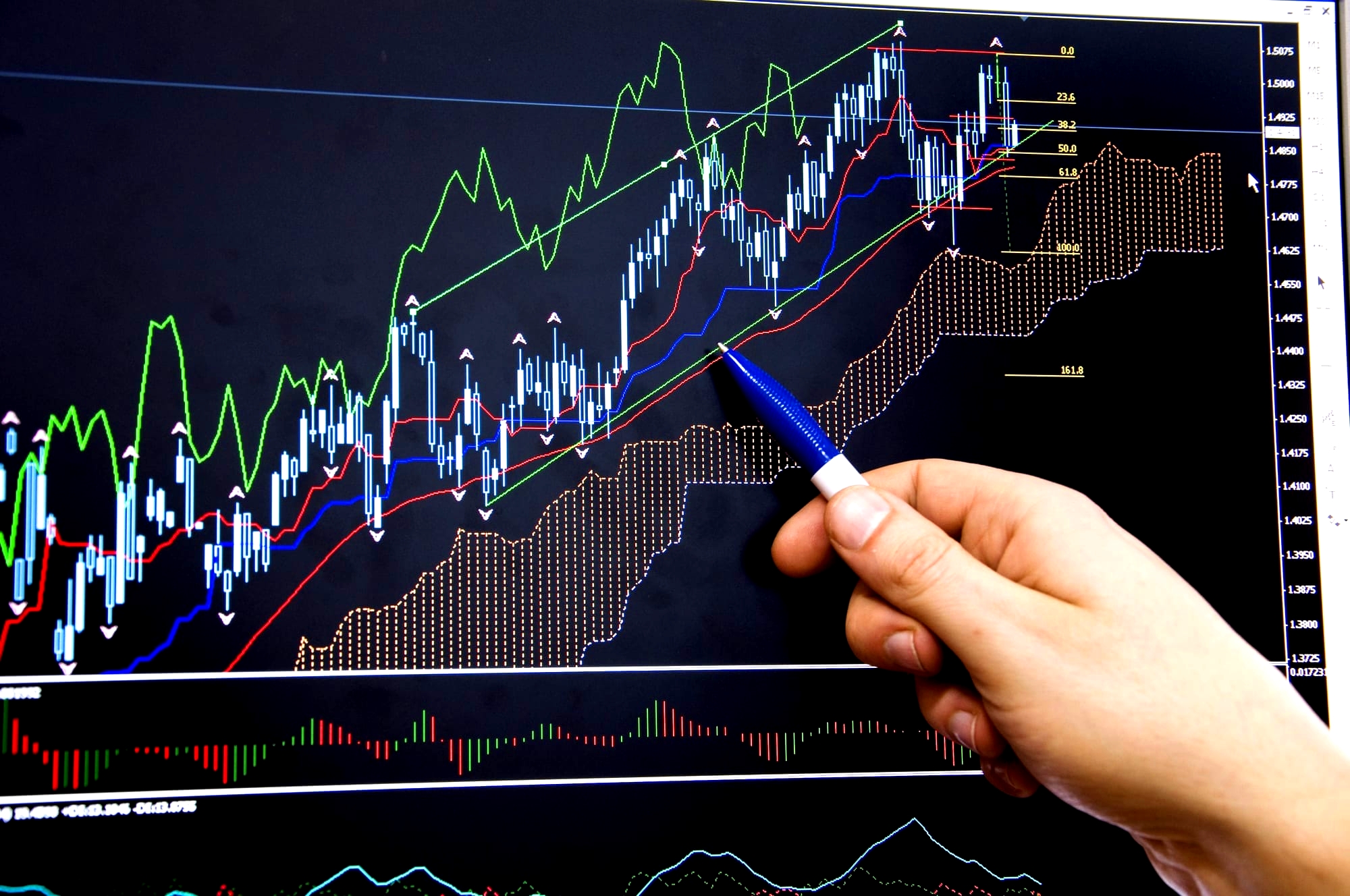Best Forex Trading Signals and How to Use Them
In this comprehensive guide, we will explore best Forex trading signals, how to use them, and why they are essential for both novice and experienced traders.

Forex trading is one of the most dynamic and lucrative financial markets in the world. With a daily trading volume exceeding $6 trillion, it offers immense opportunities for traders to profit from currency fluctuations. However, navigating the complexities of the Forex market requires skill, knowledge, and the right tools. One such tool that has gained immense popularity among traders is Forex Trading Signals. In this comprehensive guide, we will explore the best Forex trading signals, how to use them effectively, and why they are essential for both novice and experienced traders.
What Are Forex Trading Signals?
Forex trading signals are actionable alerts or recommendations that suggest when to buy or sell a currency pair at a specific time and price. These signals are generated by professional traders or automated algorithms and are designed to help traders make informed decisions. They typically include key details such as:
- Currency Pair: The specific pair to trade (e.g., EUR/USD, GBP/JPY).
- Action: Whether to buy (go long) or sell (go short).
- Entry Price: The price at which to enter the trade.
- Stop-Loss: A level to limit potential losses.
- Take-Profit: A level to lock in profits.
Forex trading signals can be delivered via email, SMS, mobile apps, or directly through trading platforms. They are particularly useful for traders who lack the time or expertise to analyze the market themselves.
Why Use Forex Trading Signals?
- Time-Saving: Analyzing the Forex market can be time-consuming. Forex trading signals eliminate the need for constant monitoring, allowing traders to focus on other aspects of their lives or trading strategies.
- Expert Insights: Many signal providers are experienced traders or use advanced algorithms to generate signals. This provides access to professional insights without requiring years of experience.
- Emotion-Free Trading: Emotions like fear and greed can cloud judgment. Forex trading signals provide objective recommendations, helping traders stick to their strategies.
- Learning Opportunity: For beginners, following Forex trading signals can be an educational experience. By observing how signals are generated and executed, traders can improve their own analytical skills.
- Diversification: Signals often cover multiple currency pairs and trading strategies, enabling traders to diversify their portfolios and reduce risk.
Types of Forex Trading Signals
Forex trading signals can be categorized into two main types:
1. Manual Signals
Manual signals are generated by professional traders who analyze the market using technical and fundamental analysis. These traders rely on their experience, chart patterns, and economic indicators to identify trading opportunities.
Pros:
- Human intuition and judgment can adapt to changing market conditions.
- Often include detailed explanations and insights.
Cons:
- Subject to human error and bias.
- May not be available 24/7 due to the need for manual analysis.
2. Automated Signals
Automated signals are generated by algorithms or trading bots that analyze market data in real-time. These systems use predefined rules and indicators to identify trading opportunities.
Pros:
- Available 24/7, ensuring no opportunities are missed.
- Free from emotional bias.
- Can process vast amounts of data quickly.
Cons:
- Limited flexibility in adapting to unexpected market events.
- It requires regular updates and maintenance.
How to Choose the Best Forex Trading Signals

With countless signal providers available, selecting the right one can be challenging. Here are some factors to consider:
1. Accuracy and Performance
Look for providers with a proven track record of accuracy. Many signal services publish their historical performance, including win rates and average returns. Be cautious of providers that make unrealistic claims.
2. Transparency
A reputable signal provider should be transparent about their methodology, risk management practices, and performance metrics. Avoid providers that withhold critical information.
3. Delivery Method
Choose a provider that offers signals through a delivery method that suits your trading style. For example, if you prefer mobile trading, opt for a provider with a dedicated app.
4. Cost
While some signal providers offer free services, premium providers often charge a subscription fee. Consider the cost relative to the value provided and ensure it fits within your budget.
5. Customer Support
Reliable customer support is essential, especially for beginners. Look for providers that offer responsive support through multiple channels.
6. Trial Period
Many providers offer a free trial or money-back guarantee. Use this opportunity to evaluate the service before committing.
Top Forex Trading Signal Providers
Here are some of the best Forex trading signal providers in 2023:
- ForexSignals.com
- Offers both manual and automated signals.
- Features a team of professional traders and educational resources.
- Provides real-time alerts and a supportive community.
- DailyFX
- Known for its free Forex trading signals.
- Offers comprehensive market analysis and insights.
- Ideal for beginners and intermediate traders.
- MQL5
- A marketplace for automated trading systems and signals.
- Allows users to subscribe to signals from top traders.
- Offers a wide range of options for different trading styles.
- Pips Alert
- Provides high-quality signals with a focus on risk management.
- Offers a free trial and affordable subscription plans.
- Suitable for both short-term and long-term traders.
- Learn 2 Trade
- Combines Forex trading signals with cryptocurrency signals.
- Offers a Telegram-based signal service.
- Known for its high accuracy and user-friendly interface.
How to Use Forex Trading Signals Effectively
Using Forex trading signals effectively requires more than blindly following recommendations. Here are some tips to maximize their potential:
1. Understand the Strategy
Before using any signal, understand the underlying strategy. Is it based on technical analysis, fundamental analysis, or a combination of both? Knowing the rationale behind the signal will help you make informed decisions.
2. Practice Risk Management
Even the best Forex trading signals are not foolproof. Always use proper risk management techniques, such as setting stop-loss and take-profit levels, and never risk more than you can afford to lose.
3. Backtest Signals
If possible, backtest the signals using historical data to evaluate their performance. This will give you confidence in their reliability and help you identify any potential weaknesses.
4. Combine with Your Analysis
While Forex trading signals provide valuable insights, they should not replace your own analysis. Use them as a supplement to your trading strategy and consider other factors such as market sentiment and economic news.
5. Monitor Performance
Regularly review the performance of the signals you are using. If a provider consistently underperforms or fails to meet your expectations, consider switching to a different service.
6. Stay Informed
The Forex market is influenced by global events and economic data. Stay informed about major news and developments that could impact currency prices.
Common Mistakes to Avoid When Using Forex Trading Signals
- Over-Reliance on Signals
Relying solely on Forex trading signals without understanding the market can lead to poor decision-making. Use signals as a tool, not a crutch. - Ignoring Risk Management
Failing to set stop-loss orders or risking too much capital on a single trade can result in significant losses. - Chasing Losses
Avoid the temptation to overtrade or increase your position size after a losing trade. Stick to your strategy and remain disciplined. - Using Unverified Providers
Not all signal providers are trustworthy. Always verify the credibility and track record of a provider before subscribing. - Neglecting Market Conditions
Market conditions can change rapidly, rendering signals ineffective. Be adaptable and adjust your strategy as needed.
Conclusion
Forex trading signals are a powerful tool for traders of all experience levels. They provide actionable insights, save time, and help mitigate the emotional challenges of trading. However, success in Forex trading requires more than just following signals. It demands a solid understanding of the market, disciplined risk management, and continuous learning.
By choosing the best Forex trading signals and using them effectively, you can enhance your trading performance and achieve your financial goals. Whether you opt for manual or automated signals, remember to stay informed, practice patience, and always prioritize risk management. With the right approach, Forex trading signals can be a valuable addition to your trading arsenal.





